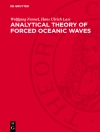Large progress has been made in the past few years towards quantifying and understanding climate variability during past centuries. At the same time, present-day climate has been studied using state-of-the-art data sets and tools with respect to the physical and chemical mechanisms governing climate variability. Both the understanding of the past and the knowledge of the processes are important for assessing and attributing the anthropogenic effect on present and future climate. The most important time period in this context is the past approximately 100 years, which comprises large natural variations and extremes (such as long droughts) as well as anthropogenic influences, most pronounced in the past few decades. Recent and ongoing research efforts steadily improve the observational record of the 20th century, while atmospheric circulation models are used to underpin the mechanisms behind large climatic variations. Atmospheric chemistry and composition are important for understanding climate variability and change, and considerable progress has been made in the past few years in this field. The evolving integration of these research areas in a more comprehensive analysis of recent climate variability was reflected in the organisation of a workshop “Climate variability and extremes in the past 100 years” in Gwatt near Thun (Switzerland), 24–26 July 2006. The aim of this workshop was to bring together scientists working on data issues together with statistical climatologists, modellers, and atmospheric chemists to discuss gaps in our understanding of climate variability during the past approximately 100 years.
表中的内容
The Observational Climate Record.- A Focus on Climate During the Past 100 Years.- From the Bottom to the Stratosphere Arctic Climate Features as Seen from the First International Polar Year (1882–1883) Until the End of World War II.- Arctic Sea Ice Data Sets in the Context of Climate Change During the 20th Century.- The Evolving SST Record from ICOADS.- Upper-air Temperature Trends: Current Problems and Some Recent Results.- Atmospheric Reanalyses and Climate Variations.- Constructing Climate Quality Atmospheric Temperatures from Satellite Microwave Measurements.- Total Ozone Observations During the Past 80 Years.- Climate Trends: Forcings and Processes.- Arctic Sea Ice Variability During the Last Half Century.- Decadal Changes in Surface Radiative Fluxes and Their Role in Global Climate Change.- Observed Interdecadal Changes in Cloudiness: Real or Spurious?.- The Role of Land-Atmosphere Interactions for Climate Variability in Europe.- Aerosol Effects on Precipitation Locally and Globally.- Climate Variability and Extremes.- Human Activity and Climate Change in Africa.- Impacts of Climate Variability, Trends and NAO on 20th Century European Plant Phenology.- Summer Heat Waves in Western Europe, Their Past Change and Future Projections.- Distribution Changes of Seasonal Mean Temperature in Observations and Climate Change Scenarios.- Chemical Changes and the Variability of the Stratosphere.- Long-term Tropospheric Ozone Trends: A Critical Review.- Simulation of Long-term Evolution of Stratospheric Dynamics and Chemistry: Role of Natural and Anthropogenic Forcings.- Dynamical Changes in the Arctic and Antarctic Stratosphere During Spring.- Creating Knowledge from the Confrontation of Observations and Models: The Case of Stratospheric Ozone.- Response of the Earth’s Atmosphere to the Solar Irradiance Variability.- Stratospheric Ozone Variations Caused by Solar Proton Events Between 1963 and 2005.- Sunspots, the QBO, and the Stratosphere in the North Polar Region: An Update.












